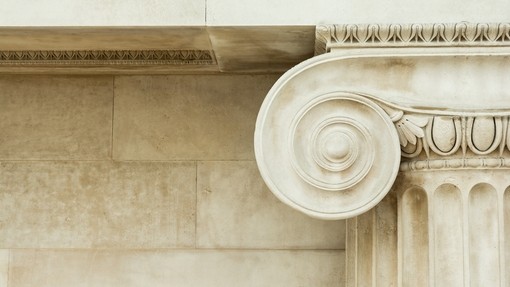Good faith and NEC: not a charter for contract breaking Van Oord -v- Dragados (2021)

Details
Summary
A recent case on appeal to the Inner House, Scotland, Van Oord -v- Dragados [2021] CSIH 50, has given some teeth to clause 10.1 in NEC3 requiring the parties to act as stated in the [sub]contract and in ‘a spirit of mutual trust and cooperation’.
In the Van Oord case we see the Scottish Inner House reinforcing the purpose of clause 10.1 to install a ‘good faith’ obligation on the parties and how this interrelates with other relevant contractual provisions thereby influencing the parties’ conduct.
The Van Oord case was an appeal by the subcontractor following a decision in the lower court, the Court of Session, that related to the omission of sub-contract works. The significance of the case is the effect clause 10.1 has on the calculation of the compensation event including under clauses 63.2 and 63.10. Clause 63.2 provides that if the effect of a compensation event is to reduce the total Defined Cost, the Prices are not reduced except as stated in this subcontract. Clause 63.10 of the subcontract states that if the effect of a compensation event is to reduce the total Defined Costs and the event is a change to the Works Information (or Scope) or a correction of an assumption by the PM for assessing an earlier compensation event, then the Prices are reduced.
The Inner House held that based on the interaction of clause 10.1 a reduction in Prices only occurs if the reduction in the total Defined Cost is brought about through a lawful change and it does not apply if the cause of the reduction in the total Defined Cost is a breach of contract.
We previously prepared an article on the decision of the Court of Session in October 2020.
Background
The background to the case is summarised in our previous article. Dragados subcontracted dredging works to Van Oord as part of a larger project to create a new harbour using a NEC3 Subcontract. During the subcontract works Dragados omitted about one third of the dredging works from Van Oord’s scope and as a consequence of this unilaterally reduced the Prices, referring to clause 63.10 as the mechanism which provides for such a reduction in Prices due to the reduced total Defined Cost.
At first instance, the Court of Session, Scotland, held that “while instructions to omit certain sub-contract works constituted a breach of contract on the part of the contractor, the NEC compensation event mechanism nonetheless applied to the valuation of the remaining works.”
The unsuccessful subcontractor, Van Oord, appealed to the Inner House. Van Oord asked the court to declare (i) that Dragados was not entitled to reduce the sum payable to it for work done consequent upon the disputed instructions, and (ii) payment of a sum based on the original bill rate. The issue was whether Dragados was entitled to reduce the sums payable to Van Oord. The answer turned on the proper construction of NEC3.
The decision
Van Oord’s position centred on the issue of unfairness. It argued that Dragados: (a) insisted on a blended rate in the tender; (b) omitted more of the easier work and transferred it to the other two companies; and (c) did so to avoid having to pay standby charges.
Dragados denied this. It maintained that NEC3 provides a blueprint for the circumstances that have arisen pursuant to the compensation process, in particular clause 63.10. It also maintained that the recalculation yielded a fair result to Van Oord, which would otherwise receive a windfall benefit. With regard to factual matters, Dragados claimed that Van Oord: (a) showed poor productivity; (b) would have made a loss on the transferred work; (c) facilitated the transfer of works; and (d) would be left neither better nor worse off by the NEC3 compensation event mechanisms.
The Inner House took a different stance to the first instance judge and stated that “In our view clause 10.1 is not merely an avowal of aspiration. Instead it reflects and reinforces the general principle of good faith in contract”.
The court also said that clause 10.1 aligned with three propositions of English law being implied terms or rules of contractual interpretation namely:
(i) a party cannot gain an advantage from its own breach;
(ii) a subcontractor is not obliged to follow an instruction issued in breach of contract; and
(iii) clear contractual terms are need for one party to be at the mercy of another party.
Much was made of the point that a party cannot benefit from its own breach which embodies the concept of mutuality, ie that a party cannot enforce a contractual stipulation in its favour, if it is the counterpart of another clause which it has breached. The Inner House concluded that clauses 10.1 and 63.10 were counterparts.
Clause 63.10 of the subcontract provides that the Prices may be reduced but only if there is a change to the Works Information which is in accordance with the subcontract (or, according to the Inner House, consistent with the subcontract). The court emphasised that the NEC should not be a charter for contract breaking and Clause 63.10 applies only to a lawful change and excludes instructions issued in breach of contract.
On this basis, Dragados could not seek a reduction in the Prices without fulfilling its duty to act in a spirit of mutual trust and cooperation, ie it must act in good faith. This decision means that Van Oord will be able to put its case to a proof before answer (a trial on facts and law) and evidence can be considered to assess Dragados’ conduct and if it fell short of its duty to act in accordance with clause 10.1, ie honestly, fairly and reasonably.
Key takeaways
- There are few reported cases on how the good-faith requirements of the NEC interact with the express clauses. While this is a Scottish decision it is likely to be persuasive and it is helpful to have the Inner House’s commentary on the interaction of good faith in the NEC and it no doubt will be considered useful by all users of the NEC suite of contracts.
- Costain Ltd -v- Tarmac Holdings Ltd [2017] EWHC 319 (TCC) 2017, is one such case where the English Court noted a parallel between ‘mutual trust and cooperation’ and ‘good faith’ and found that ‘whilst parties can maintain their legitimate commercial interests, they must behave so that their words and deeds are “honest, fair and reasonable, and not attempt to improperly exploit the other party”’.
- In relation to good faith more generally, the Court of Appeal in Mid Essex Hospital Services NHS Trust -v- Compass Group UK and Ireland Limited [2013] EWCA Civ 200 made it clear that an obligation to cooperate in good faith must be assessed in the light of the provisions of that clause, the other provisions of the contract and its overall context. It also warned that care must be taken not to construe a general and potentially open-ended obligation such as an obligation to ‘co-operate’ or ‘to act in good faith’ as covering the same ground as other, more specific, provisions, lest it cut across those more specific provisions and any limitations in them.
- A breach of clause 10.1 is likely to have consequences and we anticipate arguments that clause 10.1 should be interpreted as counterpart to other clauses. This is likely to be context-specific and in English law the warning in Mid Essex may come into play.
- The ‘spirit of mutual trust and cooperation’ clause is frequently overlooked by parties on a day-to-day project management basis but this case makes it clear that there is a need for parties to consider their actions and whether they could be construed as anything but acting fairly honestly and reasonably.






